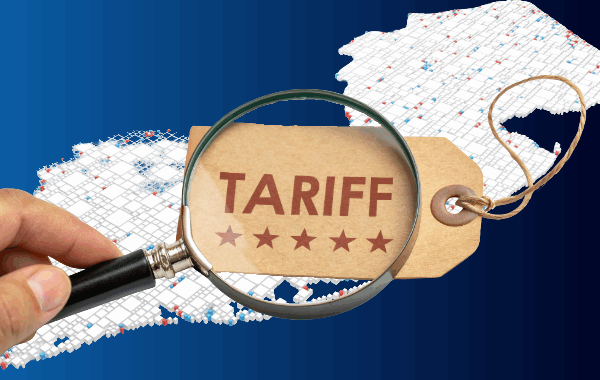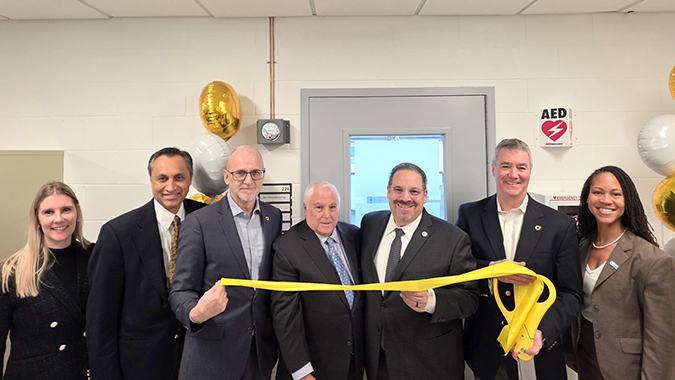Here’s a new train of thought:
As part of his budget address this week, Pennsylvania Gov. Josh Shapiro announced he is investing $161 million more for the Southeastern Pennsylvania Transportation Authority this year, bringing the state’s total funding for SEPTA to $1 billion.
All while slashing the state’s corporate business tax rate in half.
And all while progressive groups continue to insist that New Jersey absolutely, positively needs to have the largest top CBT rate in the nation to fund NJ TRANSIT.
“This confirms what we have said all along,” NJBIA Chief Government Affairs Officer Christopher Emigholz said. “The notion that New Jersey, or any state, needs to have the largest CBT rate in the nation to properly fund public transportation is ludicrous.”
“The fact of the matter is there is no nexus between the CBT and NJ TRANSIT, and most states do not use corporate taxes to fund their transportation systems. Our policymakers should be taking note of what our neighbors are able to achieve without losing the battle for business competitiveness.”
NJBIA has lauded Gov. Phil Murphy for sticking to his commitment to sunset what was a temporary 2.5% surtax on the highest earning businesses on Jan. 1.
New Jersey’s top-end rate with the temporary surtax was 11.5%, the highest in the nation, by a long shot. Even now at 9%, the Garden State still has the fourth-highest CBT rate nationally.
Pennsylvania, meanwhile, reduced its top CBT rate by one percentage point last year to 8.99% and is on a path to reduce it to 4.9% by 2031.
“We continue to encourage our policymakers to not turn a blind eye to how we compete with other states – especially our neighbors,” Emigholz said. “There is simply no rationale for increasing businesses taxes once again, at a time of a multi-billion-dollar surplus, to fund NJ TRANSIT.”
STIMULATING DATA
Emigholz also noted how lowering CBT rates has proven to be economically stimulative.
A Garden State Initiative analysis last year showed the following examples of how states have been benefited economically from lowered CBT rates including:
- Since the year before North Carolina’s CBT reductions became effective in 2013, employment has grown 16.5%, or 1.85% annually, in under a decade.
- Scaling those results to NJ’s workforce size, our state would see an additional 750,000 jobs within the next 10 years.
- In the same time frame, North Carolina’s total private business establishments expanded 32.7%, or 3.2% annually.
- In 2012, Indiana held the 15th highest corporate income tax rate in the nation at 8.5%. Today, the state has reduced its corporate income tax rate to 4.9%, or 11th lowest in the nation. From January 2013 to just prior to the pandemic decline in December of 2019, Indiana employment grew 14.8%.
Pennsylvania’s CBT path was paved by its own state analysis that found the following:
- Lowering the state’s Corporate Net Income tax by one point would increase Pennsylvania’s population by an additional 18,000 people in the first year and that population will continue to grow in each successive year.
- The 23 states with the lowest CBT/CNI rate experienced significant growth in typical home value compared to the 23 states with the highest rates.
- The difference between average union and non-union hourly wages is $1.88 greater in states with CBT rates below 4% than in states with rates of 9% and above.
- Applying Pennsylvania’s data to New Jersey, a 1% decrease in the top marginal CBT rate would lead to a meaningful increase of up to $223.35 annually in New Jersey workers’ wages based on annual mean wage in Pennsylvania in 2020.
- States with the lowest CNI/CBT rates experienced 10% higher growth in state revenues from 2000 to 2020 compared states with higher rates.
“All of this shows there is absolutely no reason to make New Jersey an extreme national outlier on CBT,” Emigholz said. “To raise it again, at a time of a large surplus and at a time when many states are lowering their CBTs, would send a clear message to the nation’s largest companies that New Jersey is not the place you want to be. And that means less economic growth and jobs for the state.”




